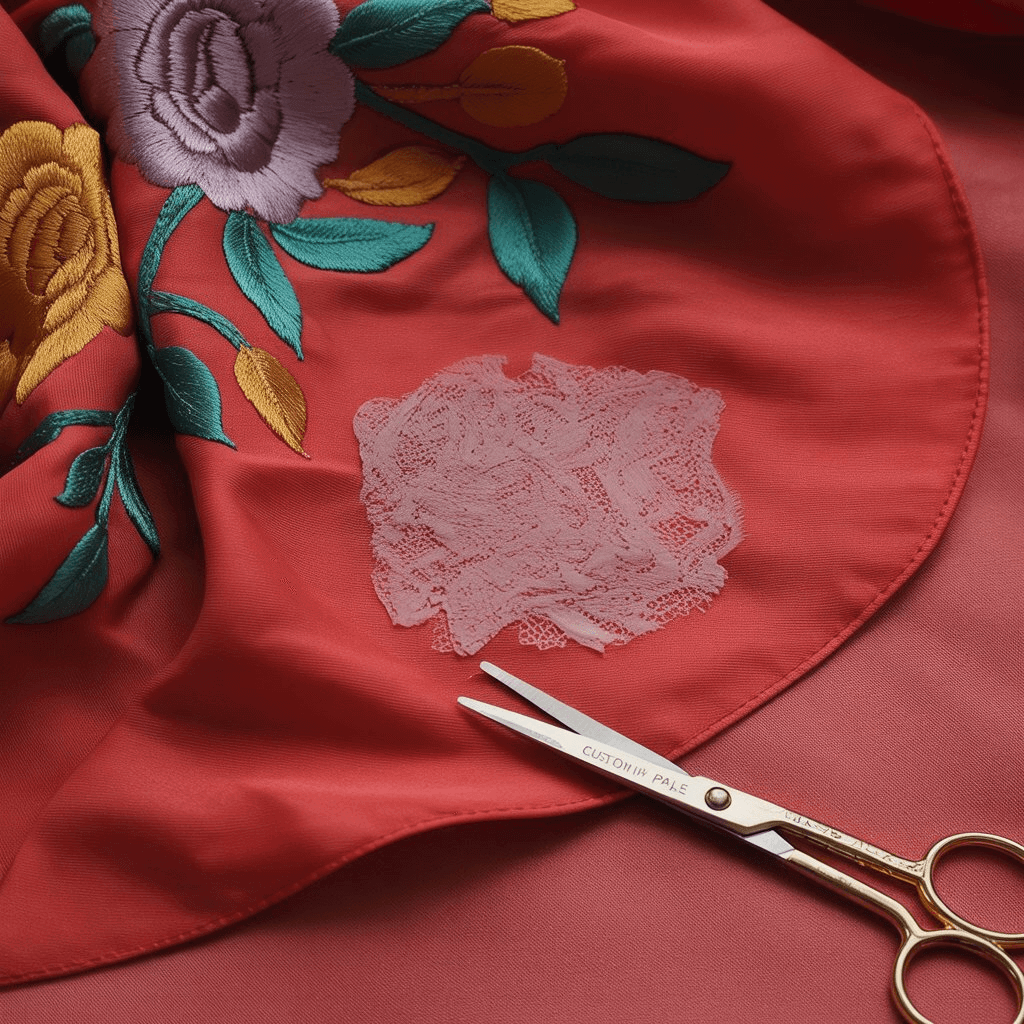You just peeled off an old patch, only to be greeted by a stubborn, shiny ghost of glue clinging to your hoodie like it pays rent. Sound familiar? Whether it’s adhesive patches that overstayed their welcome or a DIY gone a bit too permanent, patch glue can be as clingy as an ex who still texts “just checking in.”
But don’t sweat it, we’re serving up smart, fabric-safe ways to kick that glue to the curb. No scorch marks. No ruined threads. Just crisp, clean surfaces ready for fresh flair. Because one patch doesn’t rule them all.
Understanding Patch Glue: What Are We Dealing With?
Patch glue (aka heat-activated adhesive) is used on iron-on patches, adhesive-backed patches, and even certain sew-on styles for extra grip. The gooey villain behind the residue is usually a rubber-based or thermoplastic material designed to melt when heat is applied.
Sure, it’s great for bonding, but removing it? That’s where it gets interesting.
Different Fabrics, Different Tactics
Let’s break down the top techniques for safely removing patch glue from the fabrics you’re most likely to deal with:
1. Cotton: The Forgiving Favourite
Why it matters: Cotton is sturdy, breathable, and can handle moderate heat.
Removal method:
- Heat up an iron and place a piece of parchment paper over the glue.
- Press lightly for 10–15 seconds, then lift. The glue will soften and cling to the paper.
- For leftover residue, rub with rubbing alcohol or white vinegar and gently scrape using a plastic card.
Pro Tip: If you’re dealing with a more delicate cotton-poly blend, lower the heat and go slow. Want better results next time? Use custom embroidered patches that don’t leave drama behind.
2. Polyester: Handle With Care
Why it matters: Polyester can melt under high heat. Approach it like you would a sleeping cat, softly and with caution.
Removal method:
- Dampen a soft cloth with acetone-free nail polish remover.
- Dab (don’t rub!) the patch glue area, allowing the solvent to lift the adhesive gradually.
- Use a blunt butter knife or card to lift off the residue once it starts to break down.
Want more hacks? Our How to Remove a Sewn-On Patch from Your Clothes blog has you covered on needle-and-thread residue too.
3. Denim: Built to Withstand
Why it matters: Denim is tough and can handle higher heat and heavier solvents.
Removal method:
- Soak a cotton ball in acetone and apply it to the glue.
- Use a heat gun or hairdryer to reheat the area.
- Gently scrub with a toothbrush and clean with dish soap once done.
Heads-up: Always wash the fabric thoroughly post-removal to avoid residue transfer to your new patches.
Adhesive Removers: When DIY Isn’t Cutting It
What if your patch glue is giving a big “I’m not going anywhere” energy. Time to break out the big guns, store-bought patch adhesive remover.
These are fabric-safe solutions (like Goo Gone or AlbaChem) that melt adhesives without torching your threads. A small amount applied with a cotton swab can work wonders, especially for stubborn glue on synthetics or nylon-based blends.
The Iron and Paper Towel Trick: Yes, It Works!
This is one of those grandma-level hacks that still slaps today.
- Place a folded paper towel directly over the glue.
- Use a low-medium heated iron and press down for 10–15 seconds.
- The glue will liquefy and get absorbed into the paper towel.
Keep shifting the towel to a fresh spot to avoid reapplying the same gunk. Pro move: follow up with custom iron-on patches that bond better and peel clean.
When to Avoid Heat Altogether
Heat may be a go-to, but it’s not always a good idea.
Avoid using any heat-based method on:
- Satin
- Silk
- Nylon
- Rayon
For these, stick to rubbing alcohol, gentle scraping, and lots of patience. You don’t want to end up with a melted mess worse than the glue itself.
Choosing the Right Patch Next Time: Because Prevention > Cure
Here’s the real gem: not all patches leave residue behind. By choosing high-quality, clean-release patches, you reduce the chances of turning your favourite tee into a DIY regret.
At Patch Makers UK, you can design your own patch and order with top-tier backings that remove cleanly, because who’s got time for gluey nightmares?
Bonus Tip: Cold Harden and Peel
Yup, you read that right. If the glue is soft and sticky, try placing the garment in a ziplock and popping it in the freezer for an hour. The cold hardens the glue, making it easier to peel off with minimal damage. Just don’t forget it’s in there unless you want a crunchy hoodie.

From Sticky Situations to Slick Style
Once the glue’s gone, your fabric is ready for a fresh patch upgrade. If you’re not into heat anymore (understandable), explore sew-on or Velcro options. They’re reusable, less messy, and ideal for custom patches made in the UK that deserve a non-sticky stage.
For more removal tricks and maintenance ideas, check out How to Remove Iron-On Letters Patches, because no one wants ghost letters haunting their sleeves.
Fabrics That Freak Out Easily: Silk, Rayon, and Nylon
When you’re dealing with diva fabrics like silk or rayon, applying heat or harsh chemicals is basically inviting chaos. Here’s how to cleanly remove patch glue without turning your fancy shirt into an accidental science experiment.
Silk & Rayon:
- What NOT to do: No heat. No acetone. No alcohol. These will discolour, burn, or break the fibres.
- What TO do: Use warm water with a gentle detergent. Dampen a clean microfiber cloth and blot the patch glue repeatedly until it loosens. A plastic scraper (or even a dull edge like a credit card) can help gently lift residue without tearing.
Nylon:
- Nylon is tricky, it melts under high temps and can discolour easily.
- Go for adhesive remover wipes or oil-based solutions like baby oil or olive oil. Leave it on for 5–10 minutes, then blot clean.
Pro Tip: After removal, always rinse or wash the area to avoid oil stains or product buildup before applying your next custom PVC patch.
Patch Glue Removal Mistakes That Ruin Fabrics
Sometimes the enemy isn’t the glue, it’s the technique. Avoid these classic blunders if you want to keep your gear wearable:
- Scraping with metal tools
Don’t grab a knife. Seriously. Use a soft plastic scraper or your fingernail to avoid fabric cuts. - Turning up the iron
More heat ≠ more success. You’re trying to melt glue, not incinerate cotton. - Pouring solvents
Always use a small amount on a Q-tip or cloth. Solvents can stain or bleach fabrics if poured directly.
How To Prep for Patch Replacements (Without Another Glue Catastrophe)
You removed the old patch. Congrats! Now, before adding a new one, do these three things:
- Spot test the area – Is there any residue left? If yes, it may interfere with new adhesives.
- Wash and dry – This removes any oils, solvents, or leftover gunk.
- Iron flat (if safe) – A smooth surface makes patch application easier.
You’re officially glue-free and patch-ready. If you want options that attach and detach without drama, consider sew on patches for clothes instead of iron-ons next time.
Best Adhesive Removers You Can Buy (That Won’t Trash Your Clothes)
For stubborn glue, these removers are your MVPs:
- Goo Gone Fabric Safe – Works on denim, cotton, and canvas.
- AlbaChem Adhesive Remover – Great for synthetic blends.
- Uni Solve Wipes – Originally for medical adhesive but brilliant for patch glue on delicates.
These products are especially effective if you’re working with custom patches for events that need frequent updates or removals.
Can You Reuse the Patch After Removal?
Short answer? Sometimes. Long answer: Depends on how it was applied.
- Adhesive-backed patches: Usually one-time use. The glue won’t re-bond properly.
- Iron-on patches: Can occasionally be reused with fusible webbing or patch glue sheets.
- Sew-on patches: Absolutely reusable, especially if they’ve held up structurally.
If you’re reapplying, invest in heat-activated adhesive sheets or use them as applique pieces stitched onto something new.
FAQs: Removing Patch Glue Like a Professional
Q1: Will acetone damage my clothes while removing patch glue?
Yes, it can. Especially on synthetics like nylon or polyester. Always spot test first and avoid on delicates like silk or satin.
Q2: Can I iron over leftover glue to smooth it out?
Not recommended. That’ll just re-bond the glue into the fabric. Use parchment paper to lift or gently dissolve the glue instead.
Q3: Is there a patch glue remover that works on all fabrics?
Sadly, no one-size-fits-all. Goo Gone is safe for many, but always check the label or go for fabric-specific removers.
Q4: How do I prevent glue residue next time I apply patches?
Use high-quality patches with clean-release backings, like those offered by Patch Makers UK. Or opt for sew-on or Velcro options.
Q5: Can I reuse a patch after removing the glue?
Only if it’s still intact and clean. Add fresh adhesive or sew it on. Otherwise, it might not hold up well.
Still Struggling? Call in the Pros
If you’ve tried all this and that glue still refuses to ghost, your last resort might be a professional dry cleaner. Some offer fabric restoration services that safely remove adhesives using commercial-grade solvents.
But let’s be honest, sometimes it’s easier to just toss the old piece and buy custom patches online to start fresh. Life’s too short to babysit stubborn glue.
Peel Off the Glue, Patch On the Style
Removing patch glue doesn’t have to be a nightmare, you just need to match the method to the fabric and proceed with patience (and preferably coffee). Whether you’re fixing up a uniform, prepping merch, or refreshing your patch game, knowing how to clean the canvas is just as important as the art you put on it.
Want patches that don’t leave your clothes crying? Reach out to the UK’s best patch maker and let Patch Makers UK hook you up with options that are bold, adhesive-smart, and totally mess-free.





